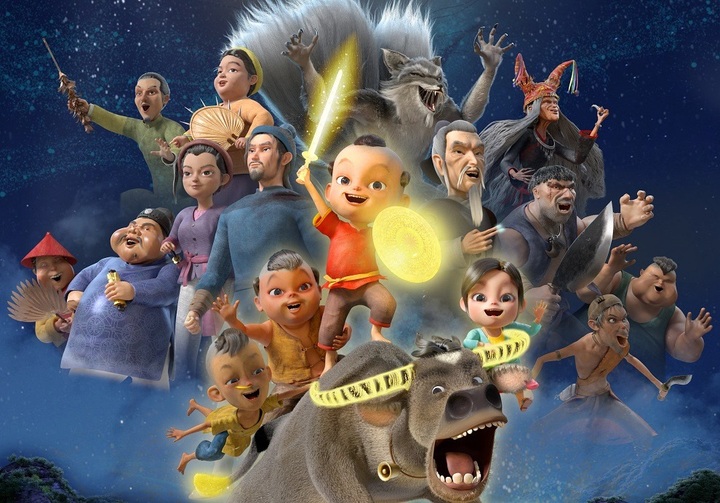
De Men earns over VND 21 billion (approximately USD 824,000), the highest gross for a Vietnamese animated film to date.
Three locally produced animated films, Trang Quynh Nhi, De Men and Wolfoo, hit cinemas across Vietnam over the last two months. The rare occurrence sparked optimism about the industry’s revival, but all three titles failed commercially.
De Men, released on May 30, earned over VND 21 billion (approximately USD 824,000), the highest gross for a Vietnamese animated film to date. Directed by Mai Phuong, the film draws inspiration from The Adventures of a Cricket, a classic children’s novel by To Hoai. It was praised for its modern visual effects, vibrant character designs and environmental message. The film’s settings, including Long Bien Bridge, Hanoi Flag Tower and Thong Nhat Park, were seamlessly woven into the narrative and resonated with audiences.
Trang Quynh Nhi grossed only VND 3.2 billion (approximately USD 126,000) before leaving cinemas. Meanwhile, Wolfoo, the only one still showing, is nearing the VND 3 billion (approximately USD 118,000) mark after two weeks but is unlikely to improve further as foreign animated features dominate.

Trang Quynh Nhi grossed only VND 3.2 billion (approximately USD 126,000) before leaving cinemas.
Nguyen Anh Tuan, a film investor and researcher at the Vietnam Institute of Culture, Arts, Sports and Tourism, expressed regret over the poor performance of the domestic animations, noting that their low revenue does not reflect their quality. He said the films demonstrated genuine effort by production teams to elevate Vietnamese animation.
Dang Tran Cuong, head of the Cinema Department, also offered praise, particularly for Wolfoo, which he said tells a touching father-child story that delivers both laughs for children and emotional depth for adults.
“This is a prime example of high-quality, locally made animation. It blends meticulous production with creative storytelling and targets both domestic and international audiences. This is the kind of work that raises the profile of Vietnamese animation,” Cuong said.
De Men by Mai Phuong and Trang Quynh Nhi by Trinh Lam Tung received similarly positive feedback from authorities.
Quality alone is not enough
According to Nguyen Anh Tuan, the Vietnamese animation sector is entering a golden period, with strong policy support from the Ministry of Culture, Sports and Tourism, and a growing number of capable studios and skilled professionals.
“Just as China has Panda, and Japan has Doraemon and Conan, Vietnam now has promising homegrown characters,” he said.
Wolfoo, in particular, has already gained international exposure through its YouTube channel, which boasts 12.6 million subscribers and over 350 million views across 212 videos, according to Social Blade. Yet, the film’s theatrical release did not capitalise on this momentum.

Wolfoo is the only Vietnamese animated film still showing this summer
Tuan stressed that cinema success depends on four key stages: script development, production, distribution and archiving. Of these, marketing and distribution are the most neglected in Vietnam, he said.
A good film is unlikely to succeed commercially without an effective campaign that raises awareness, builds audience interest and drives ticket sales. Compared to De Men, both Trang Quynh Nhi and Wolfoo suffered from underfunded marketing efforts. Tuan noted that industry standards suggest a marketing budget of at least VND 4 billion (approximately USD 157,000) is needed to sell 3.5 to 4 million tickets.
“Some producers still believe that a good film will naturally attract audiences, but that’s a misconception. Even a great product needs promotion to reach viewers,” he said.
He pointed to Dan Ca Go (Wooden Fish School), a controversial student short film that grossed over VND 4 billion (approximately USD 157,000) in one week. While its content drew mixed reviews, a strong promotional campaign ensured box office success.
Tuan concluded that beyond marketing, Vietnamese animation also needs more time to win public trust. “Until local audiences develop the habit of watching animated films in cinemas, even high-quality productions will struggle to stay on screen.”




















